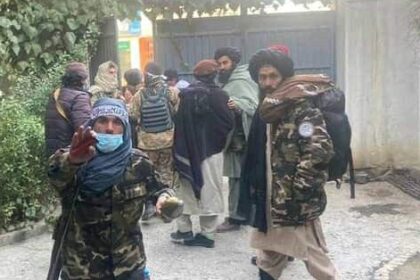RASC News Agency: Local sources in the northern province of Badakhshan have confirmed the intensification of ethnic divisions within Taliban ranks, following the reported arrest of one of the group’s members amid growing tensions between fighters of differing ethnic backgrounds. The incident once again underscores the deep internal disunity of the Taliban, whose rule remains mired in mistrust, favoritism, and coercion rather than legitimacy or national inclusion.
According to the sources, Taliban intelligence operatives detained Amaluddin Karimi, a close associate of the group’s local command, in the village of Abjam located in the Rag district. His detention followed a heated confrontation between Pashtun Taliban commanders deployed from southern Afghanistan to dominate the northern territories and local Uzbek Taliban members who have increasingly expressed resentment toward the group’s hierarchical ethnic structure.
Witnesses report that during the dispute, Karimi verbally insulted Tajik Taliban fighters, declaring that “Badakhshan is now under Pashtun occupation, and even the right to drink water requires their permission.” His remarks, perceived as a challenge to the authority of the southern Taliban faction, led to his swift arrest. However, Taliban officials later claimed that the detention was carried out “by order of the group’s military court” on charges of abuse of official authority a justification locals dismiss as a hollow attempt to disguise the group’s deep-rooted ethnic hostilities.
Residents and community elders say that ethnic and regional frictions among Taliban fighters in Badakhshan have been steadily escalating over the past year. Reports indicate that disputes over revenue from border crossings, the control of mining routes, and the appointment of district commanders frequently spark confrontations between Pashtun, Tajik, and Uzbek members of the group.
According to political observers, these tensions are symptomatic of a larger pattern of ethnic centralization within the Taliban’s leadership, dominated by Pashtun clerics and military figures from Kandahar and Helmand who continue to treat northern provinces as occupied territory rather than integral parts of a unified nation. “The Taliban’s northern presence is maintained through intimidation, not consent,” one Kabul-based analyst told RASC News Agency. “Their Pashtun commanders rule with contempt for the local population, deepening resentment that could one day turn into open rebellion.”
The latest incident is not isolated. Similar episodes of intra-group fighting have been reported in the districts of Warduj, Daraim, and Yaftal-e-Payan, where armed clashes between Tajik and Pashtun Taliban factions have reportedly resulted in casualties. Despite mounting evidence of internal decay, the Taliban’s central command in Kabul has remained conspicuously silent either unwilling or incapable of addressing the widening cracks within its own structure.
Observers note that the Taliban’s self-portrayal as a “united Islamic Emirate” has always been a myth sustained by propaganda and fear. In reality, the group’s governance model is built upon ethnic supremacy, exclusion, and authoritarian control. Its fragile administrative framework depends on repression rather than representation, and coercion rather than competence.
The arrest of Amaluddin Karimi, analysts say, epitomizes a broader implosion from within a regime at war not only with its people but with itself. The Taliban’s ongoing internal feuds expose the absence of any coherent national vision, replacing the promise of unity with the reality of ethnic fragmentation and distrust.
If these rifts continue to deepen, Badakhshan could soon emerge as a flashpoint for wider insurgent resistance against Taliban rule in the north. What the group calls “governance” is fast unraveling into what critics describe as a regime collapsing under the weight of its own contradictions a government without legitimacy, unity, or future.






